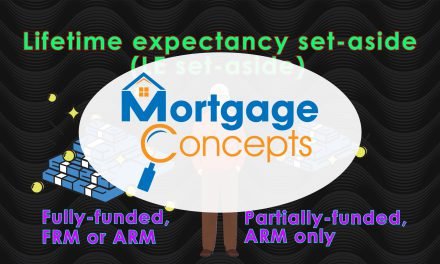Question:
When is a low down payment a better choice than a traditional down payment?
Answer:
It depends on the individual homebuyer’s finances and timing.
Homebuyers with down payments of less than 20% of the purchase price are limited to:
- Federal Housing Administration (FHA)-insured mortgages with the additional cost of mortgage insurance premium (MIP);
- conventional financing with the additional cost of private mortgage insurance (PMI); and
- if they are a qualified veteran, a U.S. Department of Veterans Affairs (VA)-guaranteed mortgage.
Of these three options, the VA-guaranteed mortgage is by far the best deal since zero down payment is required and no mortgage insurance is charged — though a less significant VA funding fee is required.
Editor’s note — Mortgage insurance is required for smaller down payments since homeowners with low down payments have less skin in the game. Thus, they are more likely to default on their mortgage than someone with more money invested.
However, if your low down payment homebuyer is not a veteran, they are stuck paying extra costs. Are they better off waiting to scrape together the 20% down payment? Or is there a situation when buying sooner, with the extra expense of mortgage insurance, is worth it?
Risk of opportunity lost
To discover the best way to spend one’s money — in this case, whether the homebuyer is better off delaying their home purchase until they have a 20% down payment — is to consider the alternatives. If a homebuyer purchases a home today with a small down payment, what is the ultimate difference in savings, and how will they spend or invest the money they may have otherwise put towards the potential full down payment?
For example, imagine a future homebuyer who needs to save $80,000 to buy the home they want with a full down payment, listed for $400,000. However, in 2016 they only have $15,000 saved toward their home purchase, enough for a small 3.5% down payment.
If they choose an FHA-insured mortgage, they will pay:
- $6,755 in upfront MIP; and
- an additional $273 each month in MIP.
MIP payments on mortgages with LTVs higher than 90% are required as long as the homeowner has a mortgage balance, even after the balance has dipped below the 80% loan-to-value (LTV) ratio. (If the LTV is less than or equal to 90%, the MIP payments are removed 11 years after origination.)
If they choose to save up for a 5% down payment on a conventional mortgage, they will pay:
- no upfront premium; and
- an additional $282 each month in PMI. [View current MIP and PMI rates here]
PMI payments are required until the mortgage balance declines to 80%.
Over the life of the mortgage, this can equal:
- over $100,000 paid for FHA’s mortgage insurance; or
- roughly $20,000 in PMI if the home appreciates at a modest rate of about 3% a year.
However, most homebuyers sell before their mortgage term is up. In this example, the homebuyer plans to move in about five years. Thus, the homebuyer can continue to rent until they can save up for a 20% or $80,000 down payment. They have $15,000 saved and they need $65,000 more.
Of more immediate concern to the homebuyer, the inclusion of mortgage insurance to the monthly payment reduces the homebuyer’s purchasing power. Therefore, they qualify for a smaller purchase amount, as money that may have gone toward paying principal or even mortgage interest goes toward paying for mortgage insurance.
Or, if the homebuyer chooses to buy with a low down payment, over these five years the homebuyer will spend a total of:
- $23,200 additional in upfront and annual MIP; or
- $16,900 additional in PMI.
Compared to the $65,000 they will need to save to qualify with a full down payment, the difference is $40,000+ over five years. That’s $40,000 more if they buy now that they can use to invest in the stock market, mutual funds or retirement. Further, home prices will likely continue to rise over the next several years, thus they may not be able to qualify for the same house in five years. Their home’s equity — and their investment — will also increase during this time.
All of these factors point toward buying today, even with the added cost of mortgage insurance.
Also of concern, interest rates are expected to steadily increase over the coming years. Therefore, it will become more expensive to take out a mortgage. In fact, the Federal Reserve projects their target short-term rate, which heavily influences mortgage interest rates, to increase by three or more percentage points by the end of 2018. While the exact amount of increase to mortgage rates is unknown, the increase will undoubtedly be significant enough to negatively impact buyer purchasing power in the coming years.
Each homebuyer situation is different, and your homebuyer may find it wiser to wait until they gain a full down payment — especially if they’re very close to reaching 20%. To run a personal comparison of whether it’s better for a homebuyer to continue renting or to purchase — even with a small down payment — fill out the Realty Publications, Inc. (RPI) Form 320-4, the Buy-Versus-Rent After-Tax Analysis.














